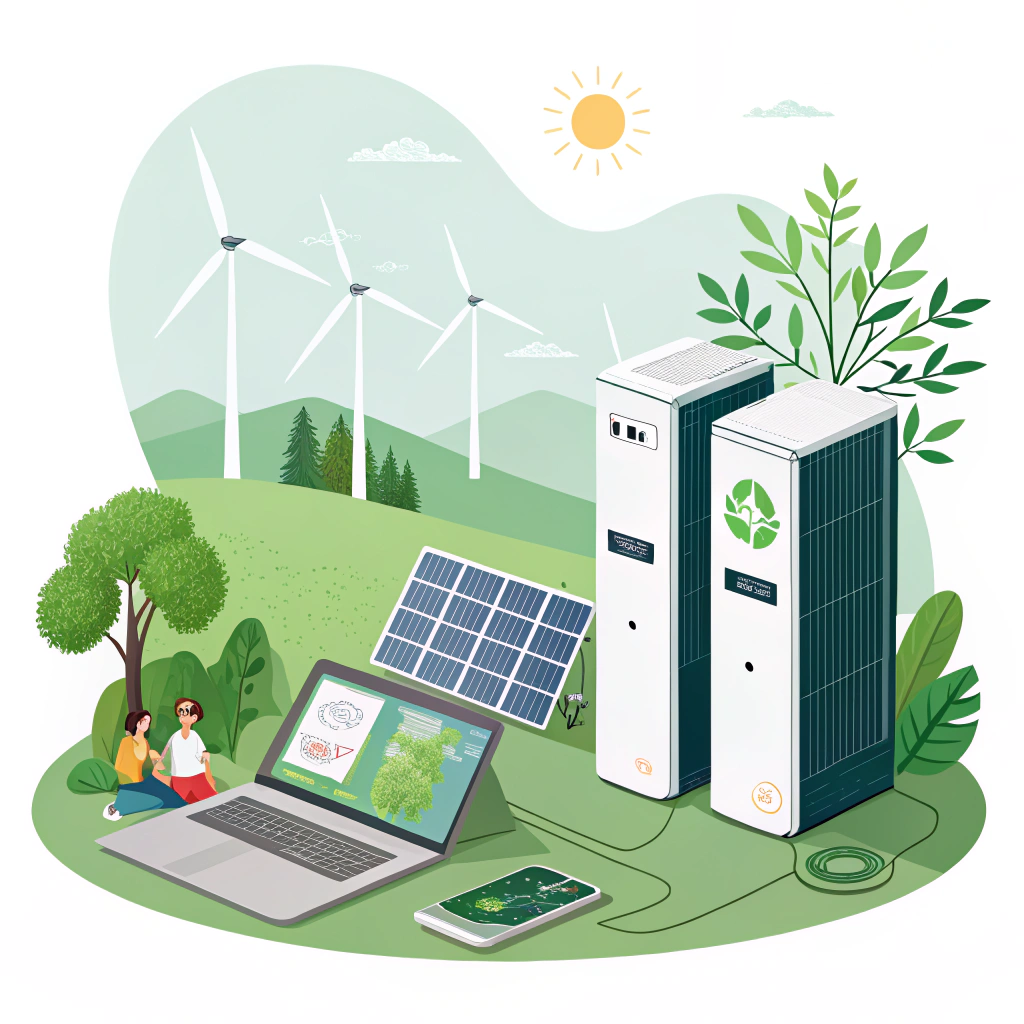Sustainable Gadgets: Technology with a Greener Future
Introduction
In the digital age, where technology is deeply woven into the fabric of everyday life, the rise of environmental consciousness has created a vital intersection between innovation and sustainability. From smartphones and laptops to smart home devices and wearables, the demand for gadgets continues to soar. However, so does the environmental impact of their production, use, and disposal. Against this backdrop, sustainable gadgets—technologies designed with environmental responsibility in mind—are emerging as a key solution to creating a greener future.
This article explores the concept of sustainable gadgets, their significance, technological innovations, real-world examples, and the broader implications for industries and consumers. We delve into how tech can be both smart and eco-friendly, and what it takes to truly embrace sustainability in a rapidly advancing digital world.

Understanding Sustainability in Technology
Sustainability in technology refers to the design, development, and deployment of gadgets and electronic devices that minimize environmental impact. This includes:
- Eco-friendly materials: Using recycled or biodegradable materials.
- Energy efficiency: Devices that consume less power.
- Durability: Gadgets built to last longer, reducing e-waste.
- Repairability and recyclability: Easy to fix, upgrade, or recycle.
- Ethical sourcing: Materials sourced without exploitation or environmental harm.
The sustainable gadget movement seeks to address the full lifecycle of a device—from resource extraction and manufacturing to usage and disposal.
Why Sustainable Gadgets Matter
1. Growing E-Waste Problem
The world generates over 50 million tonnes of electronic waste (e-waste) annually, according to the United Nations. Only about 20% is formally recycled, while the rest ends up in landfills or is informally handled in unsafe conditions. This waste contains hazardous materials like lead, mercury, and cadmium that pose serious environmental and health risks.
2. Carbon Footprint of Production
The carbon emissions associated with manufacturing tech products are staggering. Producing a single smartphone, for example, can emit 55–95 kg of CO₂. When you multiply that by billions of devices sold each year, the carbon impact becomes significant.
3. Resource Depletion
Electronics depend on rare earth elements and precious metals like lithium, cobalt, and gold. Mining these materials not only depletes finite resources but often involves unethical labor practices and environmental degradation.
Key Features of Sustainable Gadgets
For a gadget to be considered sustainable, it typically integrates several of the following features:
1. Eco-Friendly Materials
Many sustainable gadgets use materials such as recycled plastics, bamboo, cork, or biodegradable bioplastics. These reduce dependence on virgin petroleum-based plastics and lower the environmental footprint.
2. Energy Efficiency
Energy-efficient devices reduce electricity usage during operation and in standby mode. Certifications such as ENERGY STAR, EPEAT, or TCO Certified help consumers identify products that meet these standards.
3. Modular Design
Modular gadgets allow users to replace or upgrade individual components, such as batteries, screens, or memory cards, rather than discarding the entire device. This significantly extends product lifespan.
4. Recyclability
Gadgets designed for easy disassembly and material recovery contribute to a more circular economy. Clear labeling and minimal use of mixed materials enhance recyclability.
5. Ethical Manufacturing
Sustainable tech companies prioritize fair labor conditions, ethical sourcing of materials, and transparent supply chains to ensure human rights and environmental justice.
Examples of Sustainable Gadgets
1. Fairphone
Fairphone is a trailblazing example of a modular and ethically manufactured smartphone. It uses conflict-free materials, recycled components, and a modular design that allows users to replace parts themselves.
2. Framework Laptop
This repairable and customizable laptop allows users to upgrade or replace every part—from the motherboard to the keyboard—prolonging its life and reducing electronic waste.
3. Solar-powered Chargers
Solar-powered chargers harness renewable energy to power devices, especially useful in off-grid areas. Brands like Anker and Goal Zero produce reliable, portable solar charging options.
4. Eco-Friendly Wearables
Some smartwatches and fitness trackers now incorporate recycled ocean plastics and plant-based materials in their bands and casings, like the Garmin Instinct Solar Surf Edition or Apple Watch bands made from recycled yarns.
5. Biodegradable Phone Cases
Companies like Pela Case produce compostable phone cases made from plant-based materials, offering stylish protection without contributing to plastic waste.

Innovation in Sustainable Tech
The sustainable gadget movement is also driven by technological advancements aimed at improving efficiency and reducing ecological harm:
- Green semiconductors: Designed to consume less power, improving device energy efficiency.
- AI-powered energy management: Smart home systems that reduce energy consumption based on usage patterns.
- Battery innovation: Solid-state batteries, graphene-based batteries, and other innovations promise longer lifespans and fewer toxic materials.
- Circular economy platforms: Services that support refurbishing, repurposing, and reselling used gadgets (e.g., Back Market, Swappie, or Apple’s Trade-In program).
Challenges in Implementing Sustainable Gadgets
Despite growing awareness, several challenges hinder widespread adoption:
1. Cost Barriers
Sustainable gadgets can be more expensive upfront due to the use of ethical materials, low-scale production, or higher R&D costs.
2. Consumer Awareness
Many consumers are unaware of the environmental impact of their tech choices or how to find sustainable alternatives.
3. Planned Obsolescence
Some manufacturers intentionally design products with limited lifespans or non-replaceable parts to drive repeat purchases.
4. Supply Chain Complexities
Ensuring ethical sourcing and environmentally responsible manufacturing across global supply chains is a daunting task.
The Role of Companies and Policy Makers
Tech Companies
Major players like Apple, Samsung, and Microsoft are increasingly focusing on sustainability. Apple, for example, aims to have a carbon-neutral supply chain by 2030 and uses recycled materials in many of its products. However, critics argue that more systemic changes are needed, particularly around repairability and product lifespan.
Startups and Innovators
Smaller companies and startups often lead in sustainability innovation, unburdened by legacy systems. Brands like Fairphone, Framework, and Nimble are creating blueprints for responsible tech manufacturing.
Governments and Regulation
Legislation plays a crucial role in promoting sustainable gadgets. The EU’s Right to Repair law, for instance, mandates manufacturers to provide spare parts and repair information to consumers and independent repair shops. Such policies can drive industry-wide shifts.
How Consumers Can Make a Difference
Consumers hold significant power in shaping a greener tech future. Here are steps you can take:
- Choose sustainable brands: Support companies that prioritize eco-friendly materials, ethical practices, and transparency.
- Buy only what you need: Avoid impulse purchases and upgrade only when necessary.
- Repair and reuse: Fix broken gadgets instead of replacing them.
- Recycle properly: Use certified e-waste recycling programs or trade-in services.
- Advocate for change: Encourage policy makers and companies to support right-to-repair laws and sustainable innovation.
The Future of Sustainable Gadgets
As climate change intensifies and consumer awareness grows, the tech industry is under increasing pressure to evolve. The future of sustainable gadgets is likely to include:
- Full circularity: Devices designed with cradle-to-cradle principles in mind, with 100% of materials reused or recycled.
- AI-assisted design: Leveraging AI to optimize material use and minimize waste during manufacturing.
- Biodegradable electronics: Experimental tech where entire circuits and casings break down naturally.
- Green cloud infrastructure: Data centers and cloud services powered entirely by renewable energy.
While no gadget can be entirely impact-free, sustainable design is about reducing harm and maximizing utility over a device’s lifetime.

Conclusion
Sustainable gadgets are more than a trend—they’re a necessary evolution in the face of a climate and waste crisis. By rethinking how technology is made, used, and disposed of, the industry can significantly reduce its environmental footprint. From modular smartphones and solar-powered devices to ethically sourced materials and repairable laptops, the path toward a greener future is already taking shape.
For this shift to truly succeed, it requires collective action: manufacturers must innovate responsibly, governments must regulate wisely, and consumers must choose thoughtfully. The future of tech doesn’t have to come at the planet’s expense. With sustainable gadgets, we can have the best of both worlds: cutting-edge innovation and environmental stewardship.

